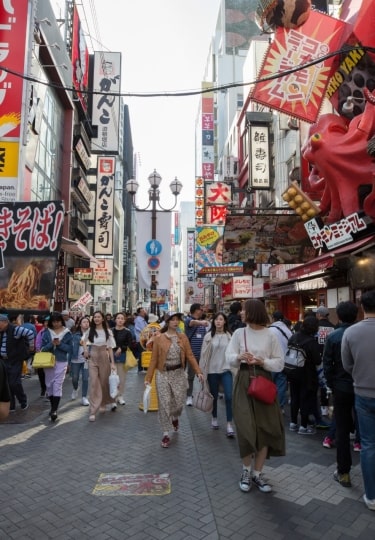If you’re wondering what to pack for Japan, have no fear. Just about anything that you accidentally forgot at home can be purchased here in a pinch.
The main things you’ll want to remember are your bōken kokoro and your betsubara. The former roughly means “sense of adventure,” although more literally translates as “adventurous heart.” The latter is a uniquely Japanese term meaning “second stomach.” It’s a rather whimsical expression for finding a second whim when dessert comes along—even if you thought you couldn’t eat another bite.
Japan is a place full of wondrous sights, delicious food, and above all, a gracious and welcoming spirit that makes it a delight to explore. Here is a list of a few essentials to take with you on your adventure.
Comfortable Shoes
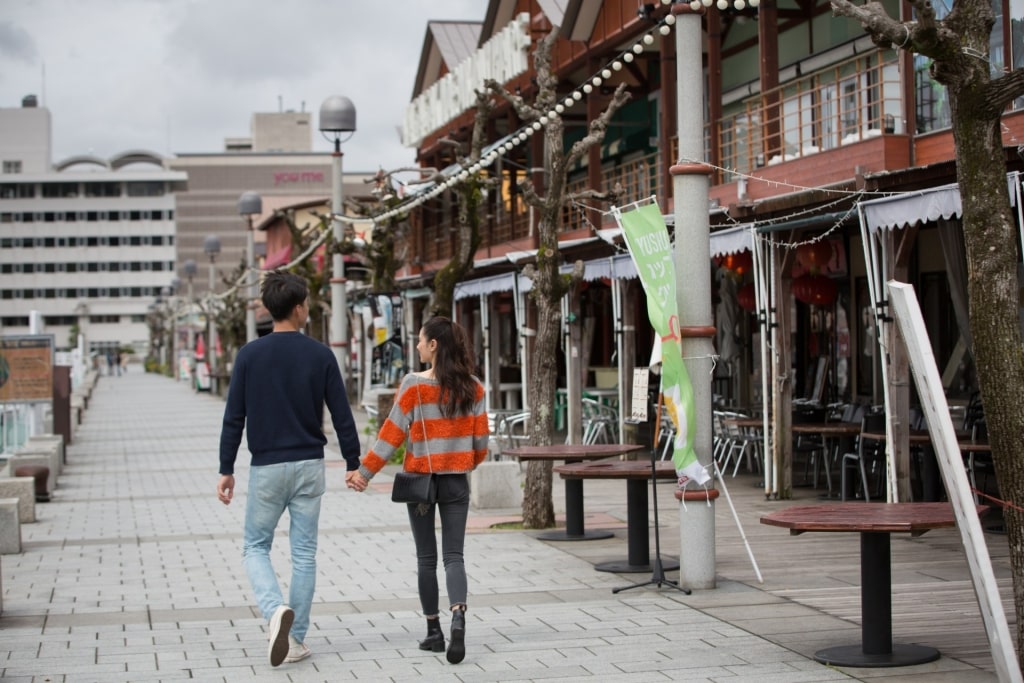
Comfortable shoes
No matter where you end up going in Japan, you can bet that you’re going to wind up walking quite a bit there. Whether you’re strolling between UNESCO World Heritage shrines in Kyoto or around the base of Mount Fuji, comfy flats or sneakers are essential.
Even in Tokyo, expect to rack up some serious mileage in between sights. The Japanese capital has one of the best metro systems in the world, but sprawls over an incredible distance. Just getting between the nine train lines covering a whopping 180 stations requires significant legwork.
Cute Socks

Socks
While few people ever think twice about what to wear under their shoes, in Japan, you may want to give it a bit more consideration.
Japanese temples, shrines, and many other public spaces ask visitors to remove their shoes before entering certain spaces. Even some restaurants request that guests take off their footwear before sitting on a tatami mat.
In other words, even if you’re not planning on entering a private home—where you should absolutely remove your shoes—it’s likely that people will see your socks. Pack footwear that slips on and off easily, along with matching, hole-free socks to hide your tootsies.
Portable Chargers
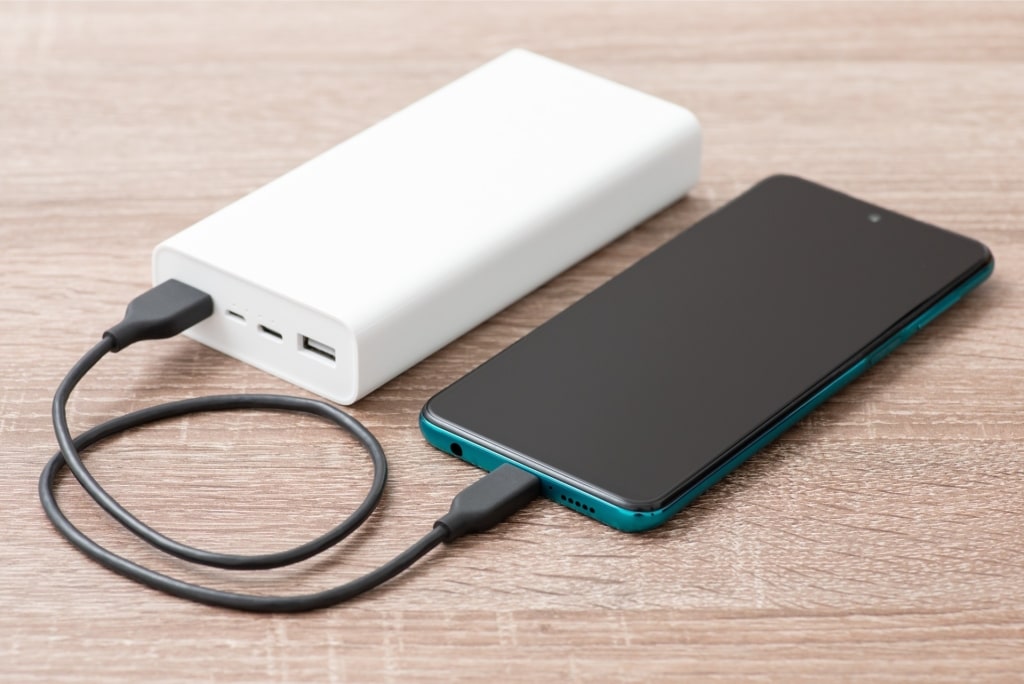
Portable charger
Connectivity is key to travel in any place, but especially in Japan. Whether you’re using Google Translate to decode signs or Maps to navigate, a smartphone is invaluable.
Since you’re likely to be taking more photos than usual, you’re going to want to protect your battery life. A portable charger that fits easily in a pocket or purse is an easy travel hack.
Plug Adaptors
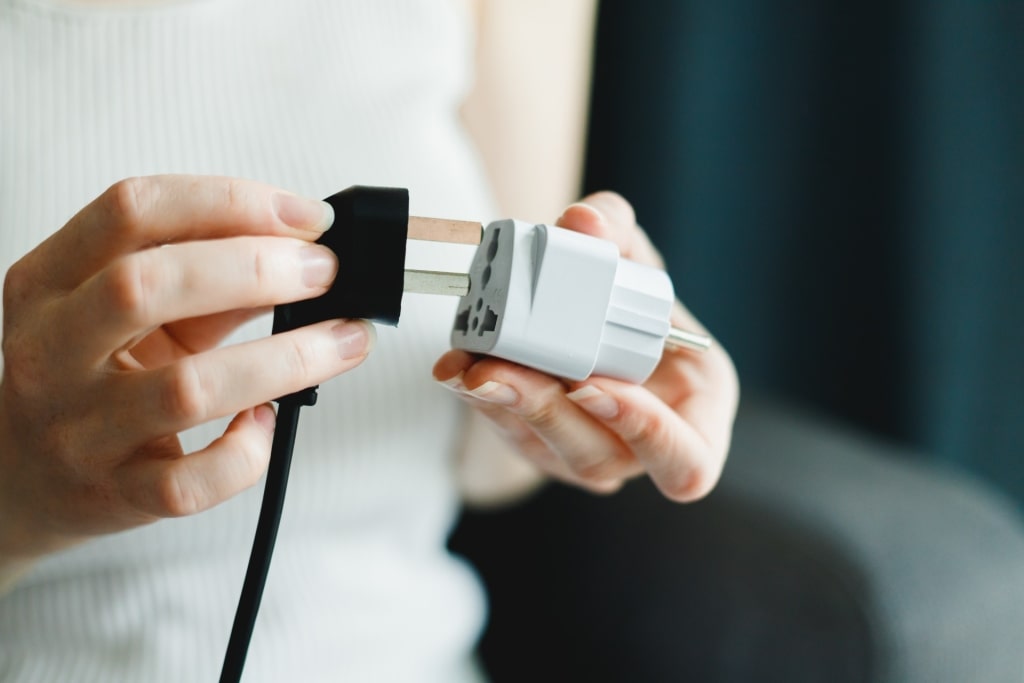
Plug adaptor
Japan uses both A and B plugs, which look similar to those in the United States, but have a few minor differences.
Plug adaptors are an easy, affordable fix to make sure American devices can charge in Japan. Meanwhile, travelers from the United Kingdom or European Union may need voltage adaptors as well.
Camera
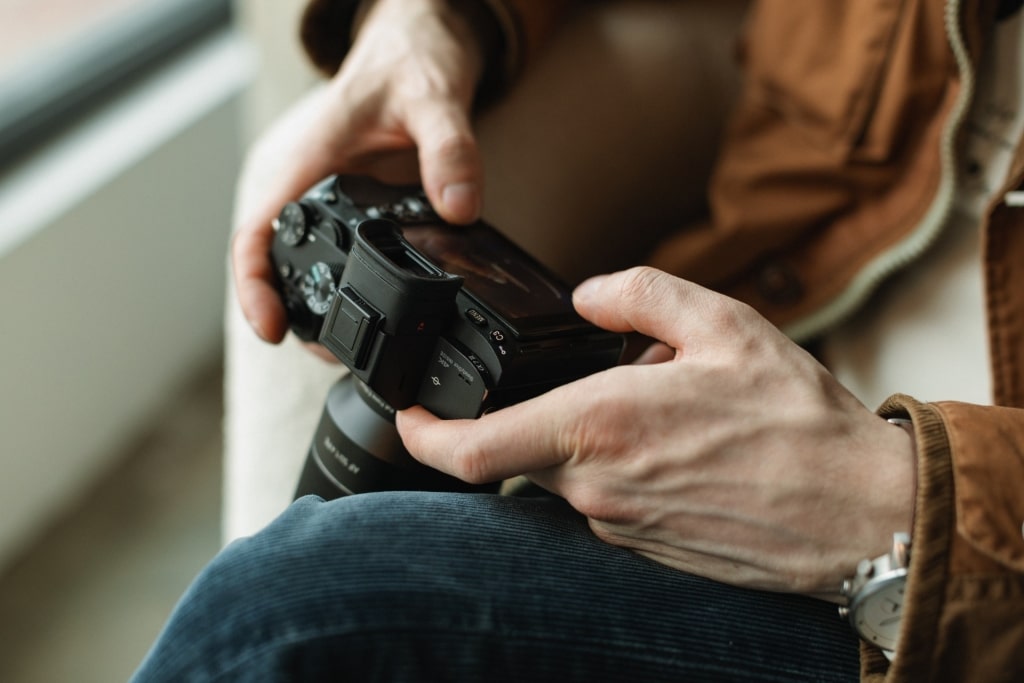
Camera
If ever there was a place to unleash your inner aspiring photographer, it’s here. Picture the majestic silhouette of Mount Fuji, one of the most beautiful places in Japan, rising above the mists to the glittering skyscrapers of Tokyo.
Few nations boast the geographic and visual diversity of Japan. From flame-colored Shinto shrines to rippling bamboo forests, the photo opportunities are endless.
For many travelers, a good-quality smartphone camera should fulfill most of your needs. If you’re looking to take your shots to the next level, however, it’s worth investing a bit. Full-frame mirrorless cameras are smaller and lighter than their DSLR counterparts.
A Large Scarf
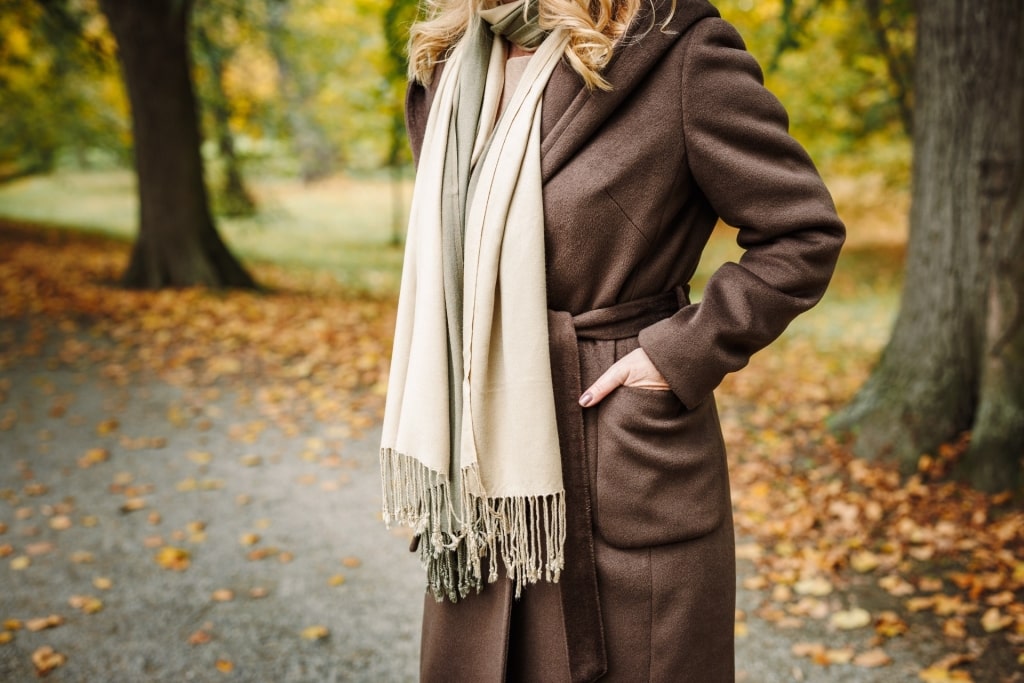
Scarf
While most temples and shrines do not have strictly enforced dress codes, visitors are still asked to be respectful and dress modestly.
For women wearing strapless dresses or tops, it may be a good idea to pack a stylish scarf to throw over your shoulders in a pinch. A print silk scarf weighs next to nothing and folds easily into the corners of your luggage.
Sunglasses
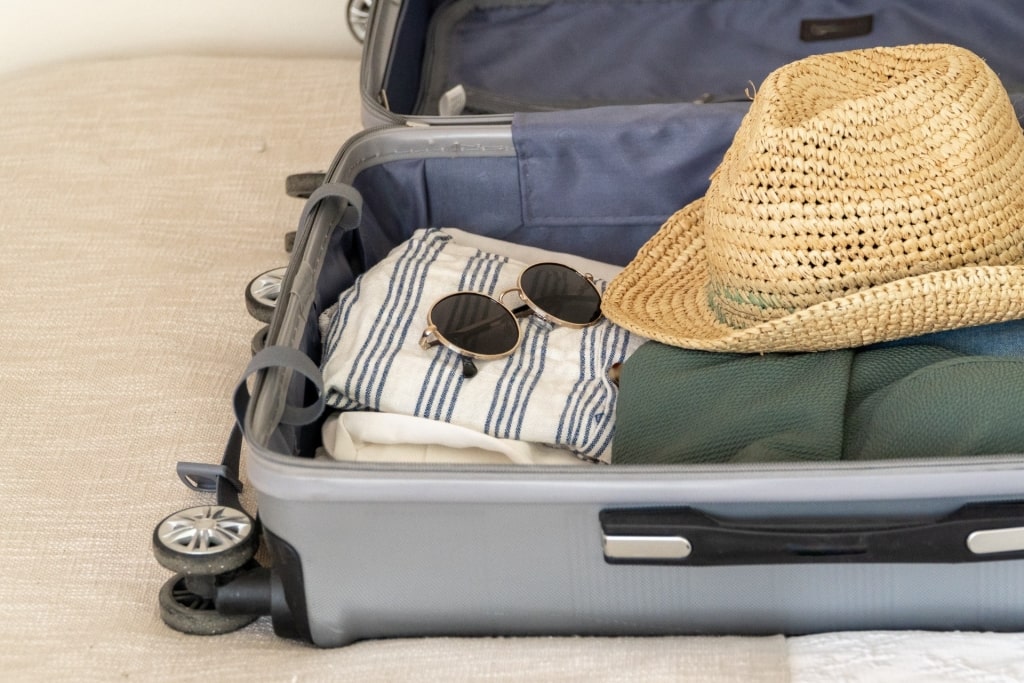
Sunglasses
Both stylish and practical, this simple accessory belongs in every traveler’s bag when visiting Japan. Opt for polarized lenses, which offer better UV protection. If possible, take a hard-shell case, which will keep your sunglasses safe when wedged in a suitcase.
Sunscreen
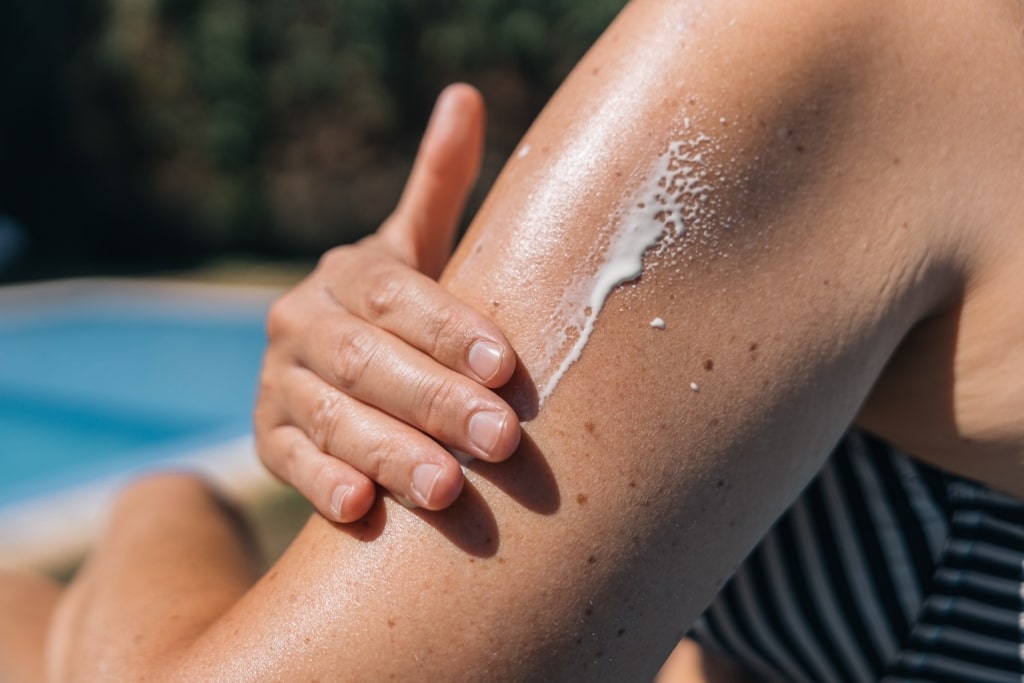
Sunscreen
SPF protection is critical no matter where in the world you travel, since UV rays can increase the risk of both skin cancer and premature aging.
Japan is blessed with many blue-skied days all year long, which makes it extra important to guard yourself against them. Aim for a non-oily sunscreen that has SPF30 or higher.
Skincare Products

Skincare products
Peruse the ritzy department stores in Tokyo’s Ginza neighborhood and you’ll quickly realize that skincare is something of a national obsession in Japan. Of course, bringing a full arsenal of products may not be realistic with luggage constraints.
That doesn’t mean, however, that you have to completely abandon your routine while traveling. Many skincare products are available in travel-friendly containers that can fit right in a check-in bag. Toss in a face wash, moisturizer, a serum with vitamin C and hyaluronic acid, plus a retinol and you’re ready to go.
Smart Casual Clothing

Smart casual clothing
Street fashion in Tokyo, Kyoto, and other Japanese cities is nothing short of spectacular, with trendy districts regularly turning into impromptu catwalks. Even if you don’t aspire to turn heads, it’s worth noting that locals here tend to dress well, regardless of where they’re going. Tasteful, minimalist-chic basics in breathable fabrics will serve you well in just about every setting.
For women, think longer silk skirts, easy-to-pack wrap dresses, linen maxi dresses, and cashmere cardigans for layering. For men, turtlenecks, well-fitted tees, polo shirts, and tailored pants are always a good idea. There’s no need to dress like a salaryman, but it’s better to err on the ever-so-slightly more formal side than show up wearing shorts and flip-flops.
Workout Gear
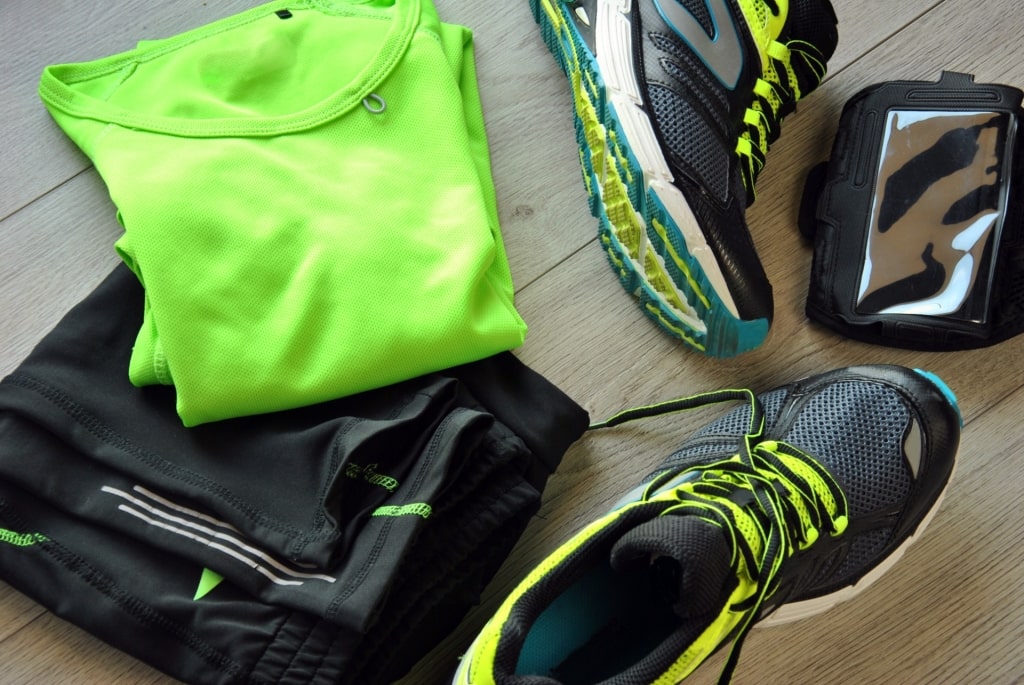
Workout gear
If you’re the type of traveler who loathes to skip leg day, it may be worth packing some basic fitness essentials in your bag. One of the best things about working out while traveling is the opportunity to take in the change of scenery in the process. Japan offers beautifully manicured urban parks perfect for morning yoga, tai chi, or just some light stretching.
If you opt for a jog, it’s hard to imagine more beautiful places to do it. Spring brings flurries of cherry blossoms, while the crimson and gold foliage of fall in Japan is breathtaking.
Travel-sized yoga mats are designed to be extremely lightweight and easy to cram into a carry-on. If you’re a runner, opt for moisture-wicking, breathable gear and compression socks for extra knee support. In any case, opt for compact, minimalist extras that won’t weigh you down.
Dressy Clothing

Dressy clothing
Whether you’re dining at a classic ryokan in Kyoto or an impossible-to-get-into omakase spot in Tokyo, you’re going to want to dress the part.
While formalwear is rarely required in Japan, this is a country second only to France in Michelin stars. Consider this optional, but if you’re planning on dining out in style, pack one great outfit that makes you feel like a million bucks.
Lightweight Rain Gear
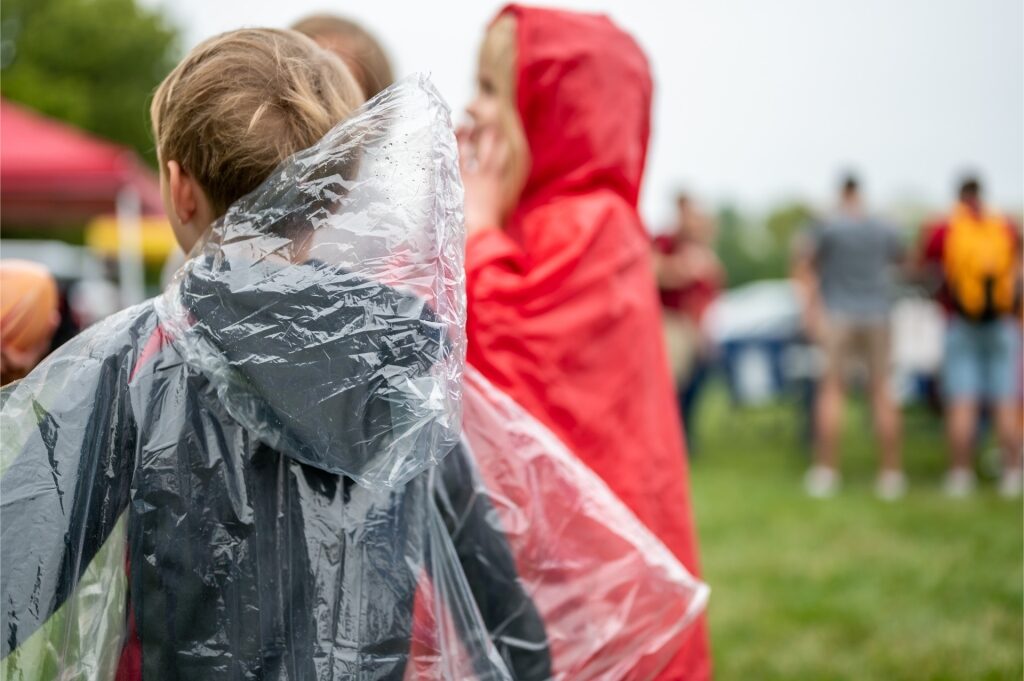
Lightweight rain gear
Japan’s climate varies enormously, from subtropical in the south all the way up to subarctic in the north. Much of the nation is temperate, with weather that varies considerably depending on the season.
Especially if you’re planning on visiting multiple areas of Japan in one trip, it pays to come prepared for different weather. It’s also essential if you plan on going hiking in places such as Aomori. A light, easily foldable poncho or rain jacket is an easy way to get ahead of the occasional shower.
Read: Expert Tips for Traveling to Japan
Japan Packing List FAQs
What should I pack for the spring?
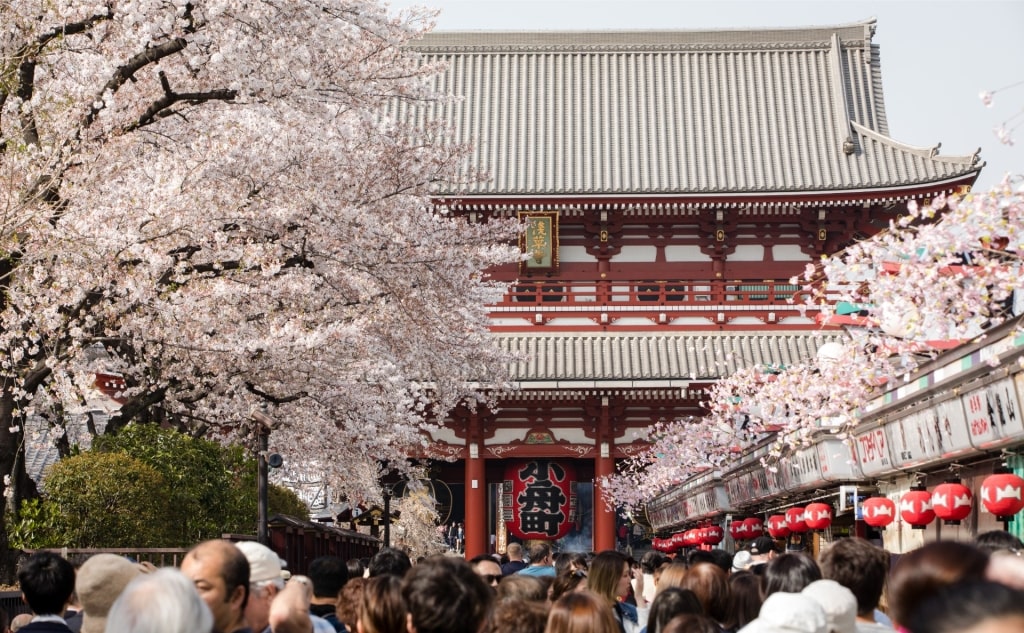
Sensō-ji, Tokyo
Springtime in Japan is typically mild, with the chance of occasional showers. In April, the average temperature in Tokyo hovers around 57°F (14°C). Evenings can get a bit chilly, with daytime highs of around 62°F (17°C).
Pack comfortable, breathable clothing with a few light layers in case it cools off. Be sure to pack your camera gear in spring, as you may be lucky enough to catch the cherry blossoms that Japan is known for in bloom.
What should I pack for the summer?
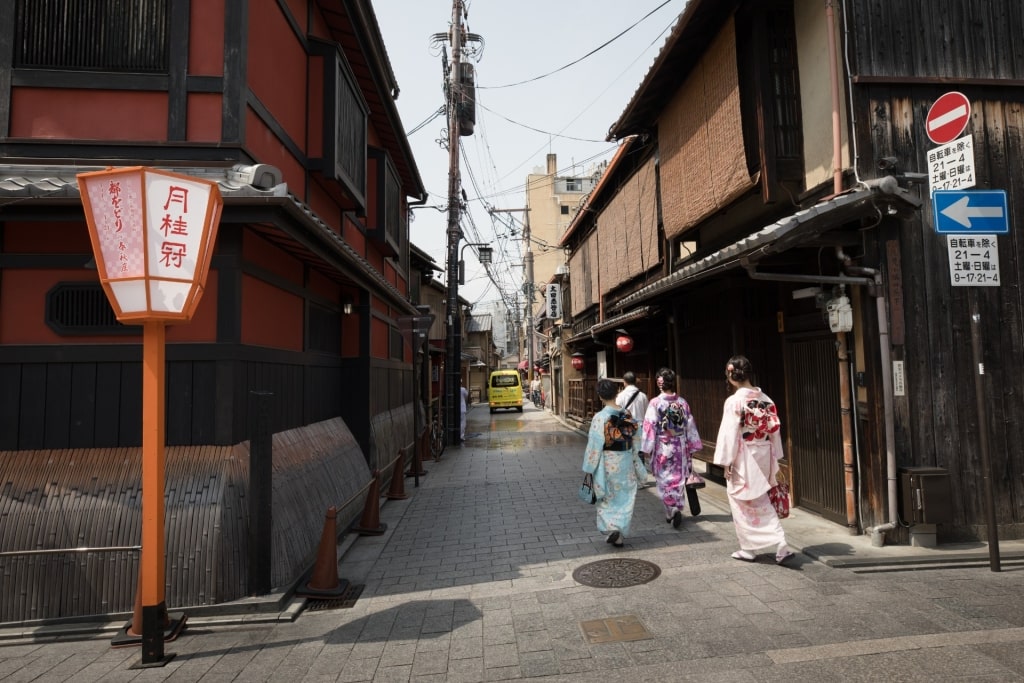
Kyoto
Summer in Japan can get hot, although rarely unpleasantly so. In June, the average temperature is around 78°F (26°C), while in July it climbs up to 85°F (29°C). Although that’s hardly unbearable, you may find yourself sweating while walking around between sights.
To stay cool, stick to lightweight clothing in natural fabrics like cotton, linen, or silk. You may also want to consider bringing a small portable fan. These easy-to-charge accessories are a quick hack to avoid overheating.
A reusable water bottle is also a great idea to make sure you stay hydrated. Since sun protection is especially important in the summer months, be sure to pack facial sunscreen and a wide-brimmed hat.
What should I pack for the fall?
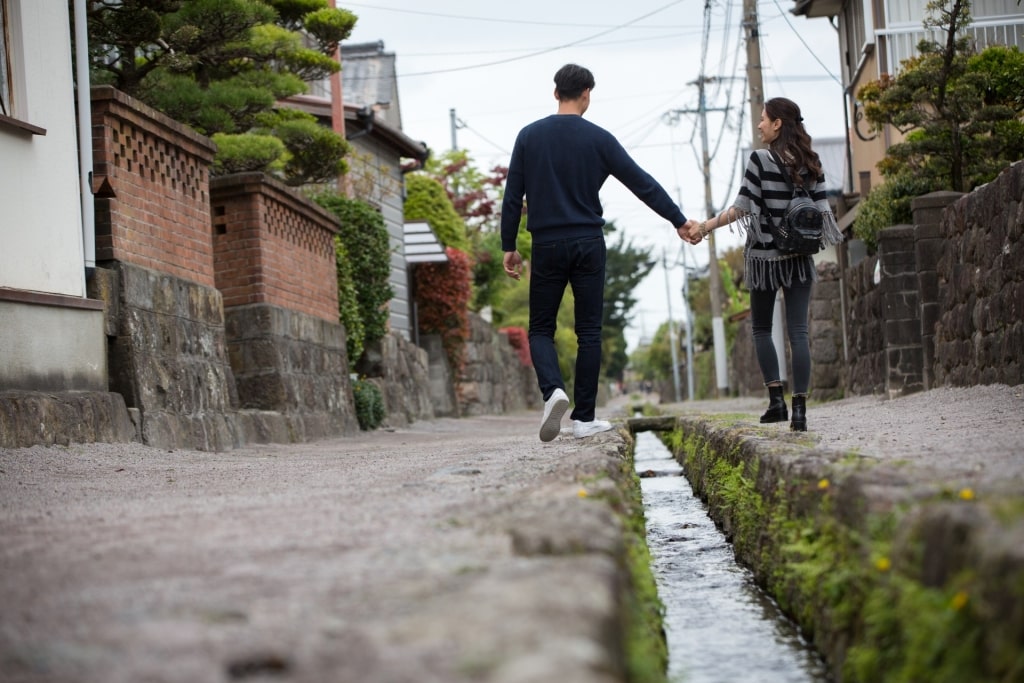
Nagasaki
Fall is often considered shoulder season in Japan, as the country tends to see fewer visitors than during the height of the summer holidays.
That being said, it’s arguably one of the loveliest times to visit Japan. The weather is still warm, with average temperatures around 81°F (27°C) in September and 71°F (22°C) in October. Since it cools off considerably at night, it’s important to pack a jacket and some light layers. Rain gear is also more important around this time of year.
What should I pack for the winter?
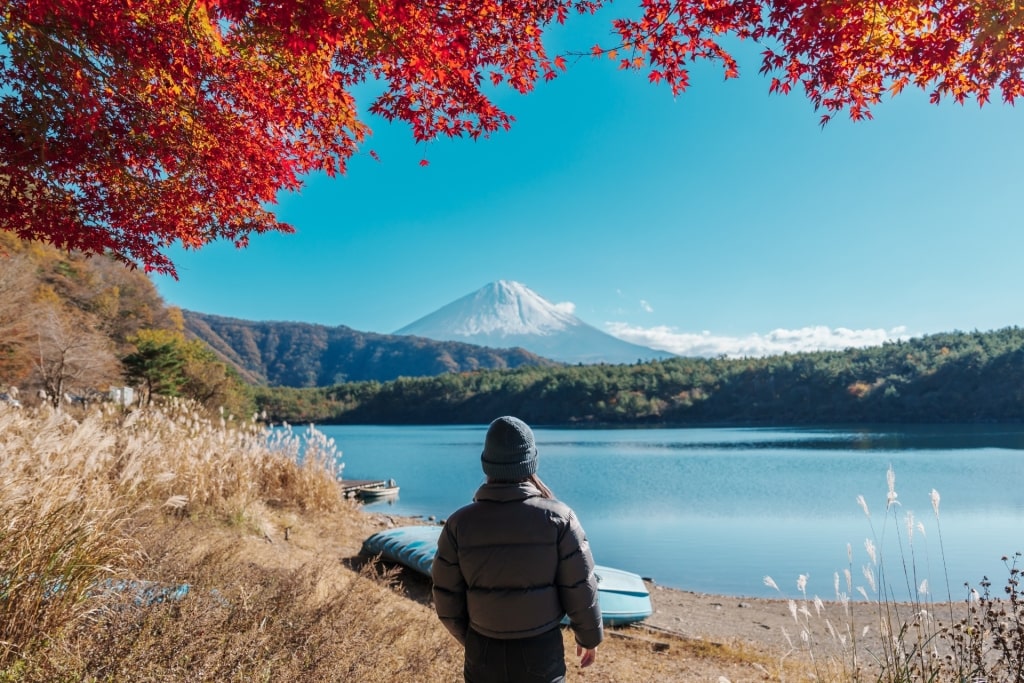
Mount Fuji
Winter is perhaps the most underrated season when it comes to traveling in Japan. The average temperature in Tokyo gets down to 54°F (12°C). That’s cold, but hardly enough to need to pack a serious puffer jacket. What’s more, days in the winter are often crisp and clear, with vivid blue skies and sunshine.
Temperatures drop as you head north towards Japan’s snowier regions. If you’re coming in the winter season, pack a heavy wool coat, a good set of gloves, and a warm scarf.
What kind of shoes are best for traveling in Japan?
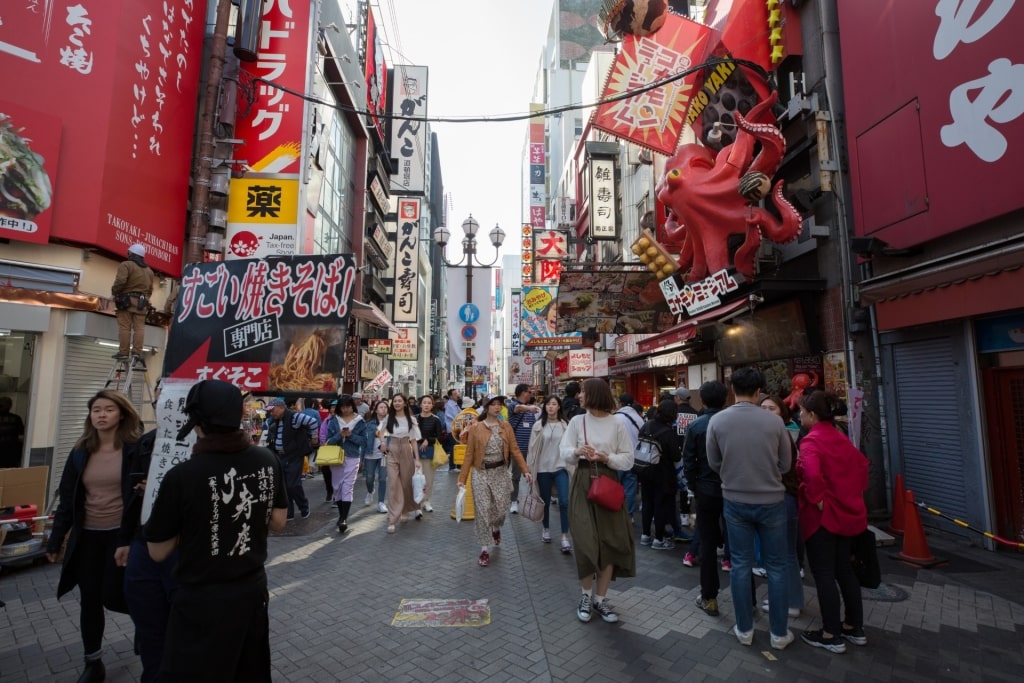
Osaka
The best shoes for traveling in Japan are ones that slip on and off with ease. Bear in mind that you’ll have to remove them before entering homes, shrines, and even some restaurants.
Above all, opt for footwear that you can comfortably walk in for hours at a time. You may see plenty of designer stilettos in Ginza, but you’ll be grateful for your sensible pair of flats.
What type of clothing is appropriate for Japan’s cultural sites?
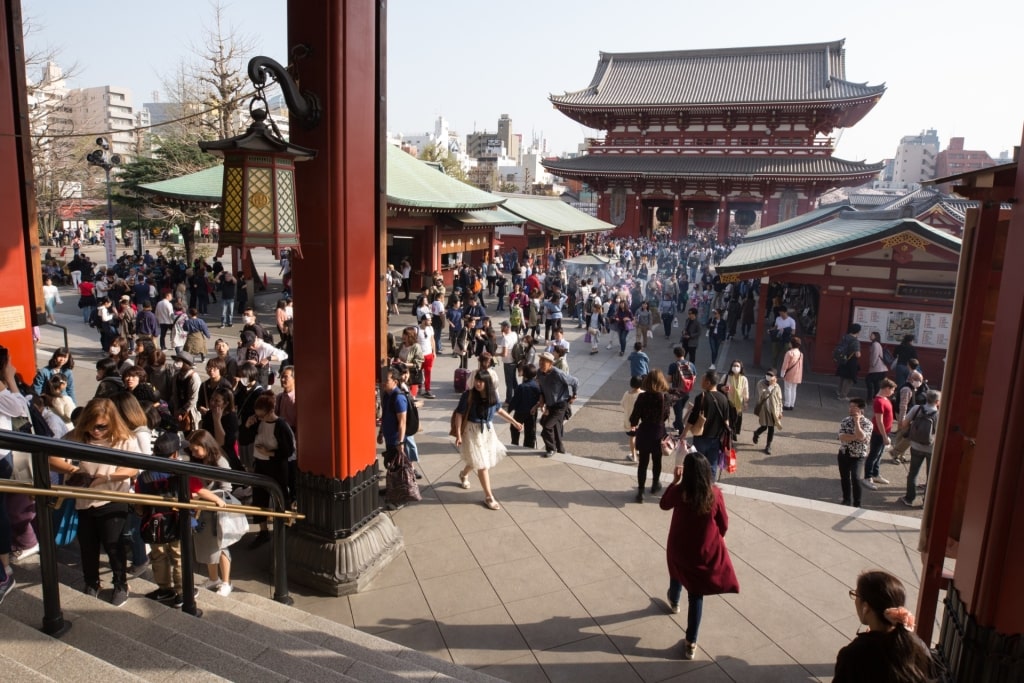
Sensō-ji, Tokyo
Most temples and shrines do not have overly strict dress codes, but visitors are asked to dress respectfully and modestly. Spaghetti-strap tank tops, short shorts, and crop tops are generally frowned upon here and should be avoided.
Even though these places see plenty of curious travelers, they’re still active places of worship and should be treated accordingly. Visitors are also asked to avoid shouting or causing a commotion here out of consideration.
Read: Best Places to Visit in Japan
What should I pack for a visit to the Japanese hot springs (onsen)?
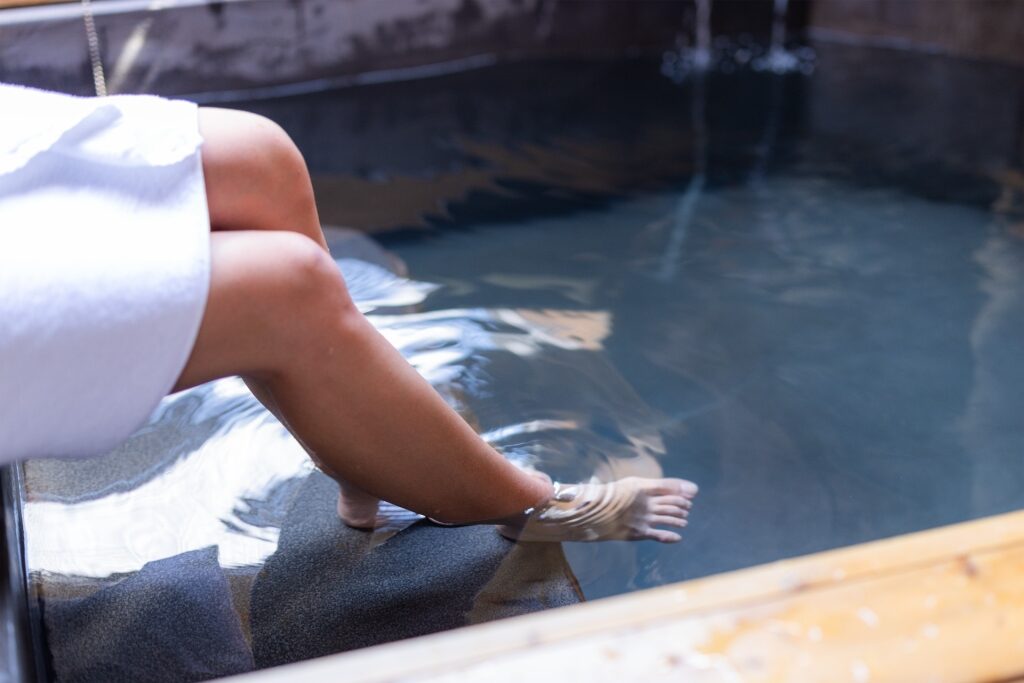
Japanese onsen
The only thing you’ll be wearing to an onsen is your birthday suit, since most forbid swimwear for tradition and hygienic reasons. That being said, you may want to bring a few things with you.
It’s worth doing a little online research about the specific onsen you plan to visit in advance since policies vary quite a bit. Some onsens require visitors to bring their own towels and bath soaps for washing up afterward, while others provide them.
If you bring your own towel, you may want to take a plastic bag to carry it out afterward. Guests with long hair will be required to tie it up. Note that some onsen still do not allow visitors with tattoos, while others have relaxed this policy over the years.
Is there anything I should avoid packing when traveling to Japan?
The main thing to avoid for your trip to Japan is simply packing too much stuff. Remember, you’re going to want to bring home Japanese souvenirs. There are all sorts of wonderful shopping opportunities here.
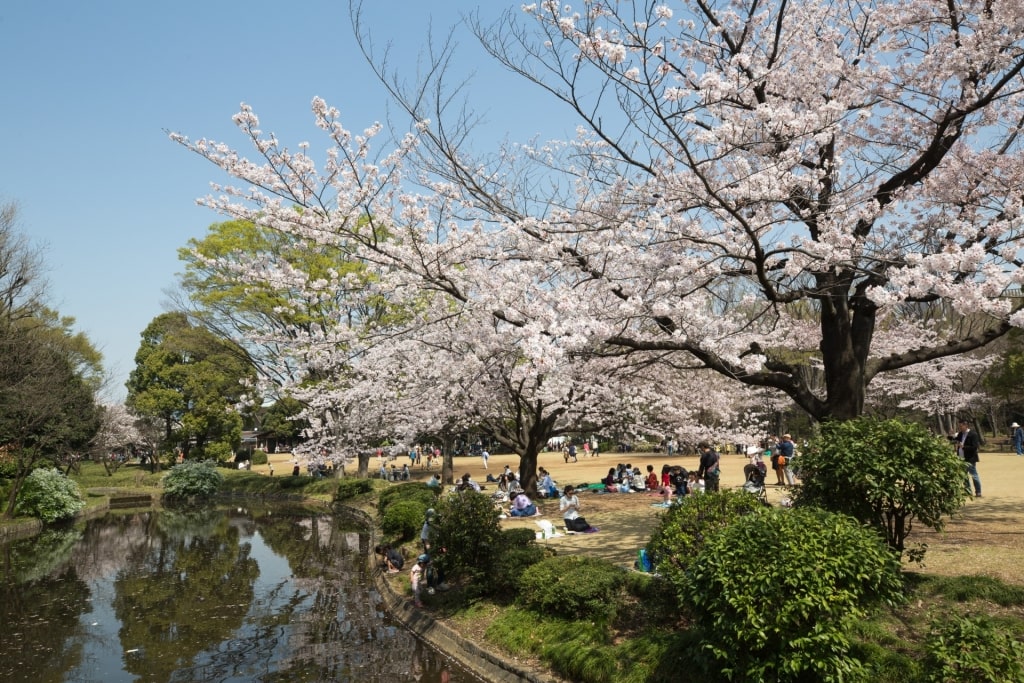
Tokyo
Ready to pack your bags and head for the Land of the Rising Sun? Browse Celebrity’s cruises to Japan and plan your Asian adventure.
